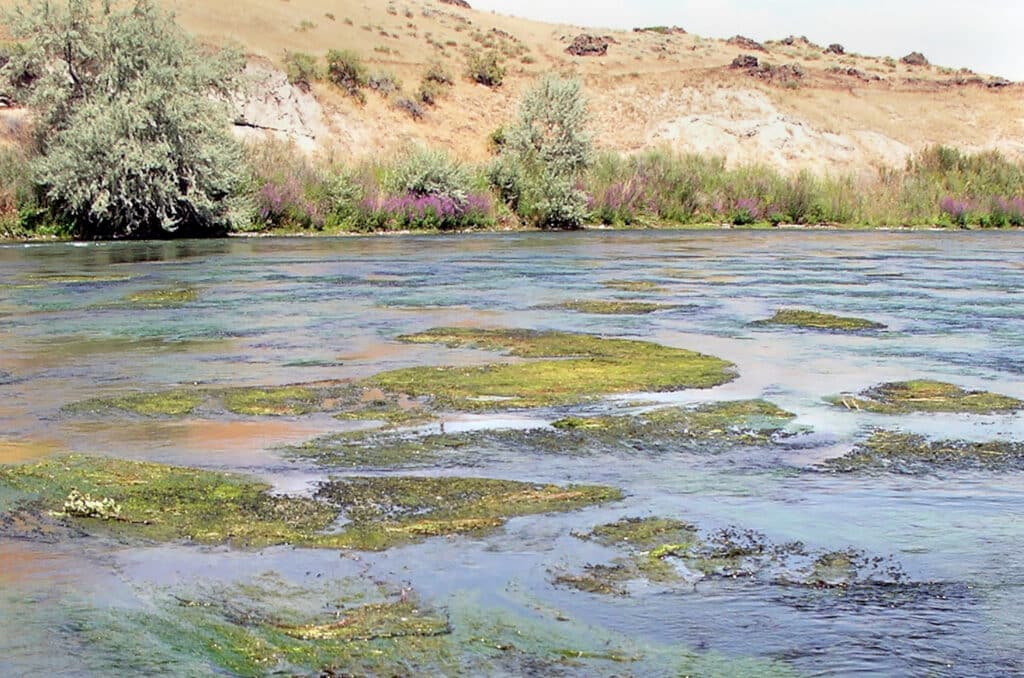EPA and Conservation Partners Outline Scalable Structure to Fund and Implement Nonpoint Source Projects
July 19, 2024
More than half of our nation’s rivers, streams and lakes are in fair or poor condition. Distributed nonpoint sources (NPS) are the dominant source of nutrients for streams and rivers in poor condition. In addition to the effective regulation of centralized point sources under the Clean Water Act (CWA), additional tools and approaches are needed to catalyze nutrient pollution reductions at the speed and scale necessary to achieve results for our rivers.
Following release of the U.S. Environmental Protection Agency’s (EPA) 2022 Accelerating Nutrient Pollution Reductions in the Nation’s Waters Memo, EPA and partners initiated the Nutrient Funding Discussion Group (NFDG). I have had the honor of co-leading this group with Jim Gebhardt of the EPA Office of Water and working with the amazing participants in the group: multiple branches of EPA, Blue Forest Conservation, Electric Power Research Institute, Environmental Policy Innovation Center, Family Farm Alliance, National Association of Clean Water Agencies, and the Soil & Water Outcomes Fund.

Working backward from an understanding that we need approaches that get a lot more funds, a lot faster, to a lot more impactful NPS projects, the NFDG first identified the funding, timing, jurisdictional, capacity, and practical obstacles that currently suppress NPS project investment at scale. Next, through deep exploration of successes and failures on the ground, the NFDG outlined specific actions that could integrate EPA’s watershed, regulatory, financing, and funding tools into a replicable framework capable of catalyzing watershed-scale nutrient improvements from NPS.
The obstacles to large-scale solutions can be summarized in these six key points:
- There is no single funding program dedicated to nonpoint sources to match the scale of need.
- Splintered and complicated NPS funding programs put burdens on applicants.
- Regulatory conditions for point source participation in NPS outcomes are not always in place.
- Conservation funding is not aligned with agricultural business needs. Specifically, agricultural producers decline to participate in conservation programs because the costs and risks often outweigh the potential returns.
- Project-by-project funding stifles the conservation economy and keeps projects scattered.
- Many government programs must move funding on tight statutory timelines, which can put funding decisions at cross-purposes with maximizing water quality outcomes.
Understanding these challenges, the NFDG documented a repeatable framework that includes integrated actions that could be taken right now to help overcome the impediments that currently stifle most watershed funding and implementation efforts.
This proposed framework would enable “watershed financing partnerships” to efficiently structure, secure funding for, finance, prioritize, and expand watershed-scale funding and implementation efforts across the country, thus empowering bigger, faster NPS results and more effective, rapid achievement of CWA goals.
An effective outcomes-based solution for addressing the NPS pollution challenge should include these five elements:
- Aggregation. A project and funding aggregator brings together multiple otherwise siloed funding streams, identifies high-return projects, and secures projects.
- Quantification. Project benefits are modeled in uniform environmental units (e.g., nutrient load, greenhouse gases, water quantity improvements) that can be verified, tracked, and transacted for multiple funders. Having all these “currencies” available makes it easier to leverage otherwise siloed funding streams in support of the same key NPS projects.
- Certainty. Build market certainty by securing and packaging multiple funding streams (e.g., regulated utility, agency grant, corporate ESG) to “buy” the high-return NPS outcomes identified through the quantification process.
- Timing. Secure upfront financing so that funds get to projects at the right time for producers.
- Simplicity. Transact funding via a simple agriculture-facing model that minimizes transaction costs for producers.
In June, the NFDG held a workshop at EPA headquarters in Washington, D.C. The workshop brought together a large group of thought leaders—including multiple federal and state agencies, farm groups, utilities, nonprofits, financiers, philanthropists, and corporations—to build momentum for scaling and more easily replicating data-driven, incentive-based, coordinated NPS funding approaches that work for agricultural partners and the environment. The two-day workshop kicked off with opening remarks from EPA Acting Assistant Administrator Bruno Pigott, who oversees EPA’s Office Water. Participants walked through the NFDG framework, explored examples of operating frameworks currently being applied in the field, and heard from various partner groups on how they can collectively integrate efforts around the NFDG framework to accelerate NPS results. The next step is to harness this momentum and convert it into action on the ground.
Read the draft Action Plan, which further details the above obstacles and solution framework. The plan also lays out specific actions for bringing together existing but uncoordinated tools with the right supporting incentives to scale up outcomes-based programs.
#EPA #nonpoint source #nutrients #policy #runoff #water policy
